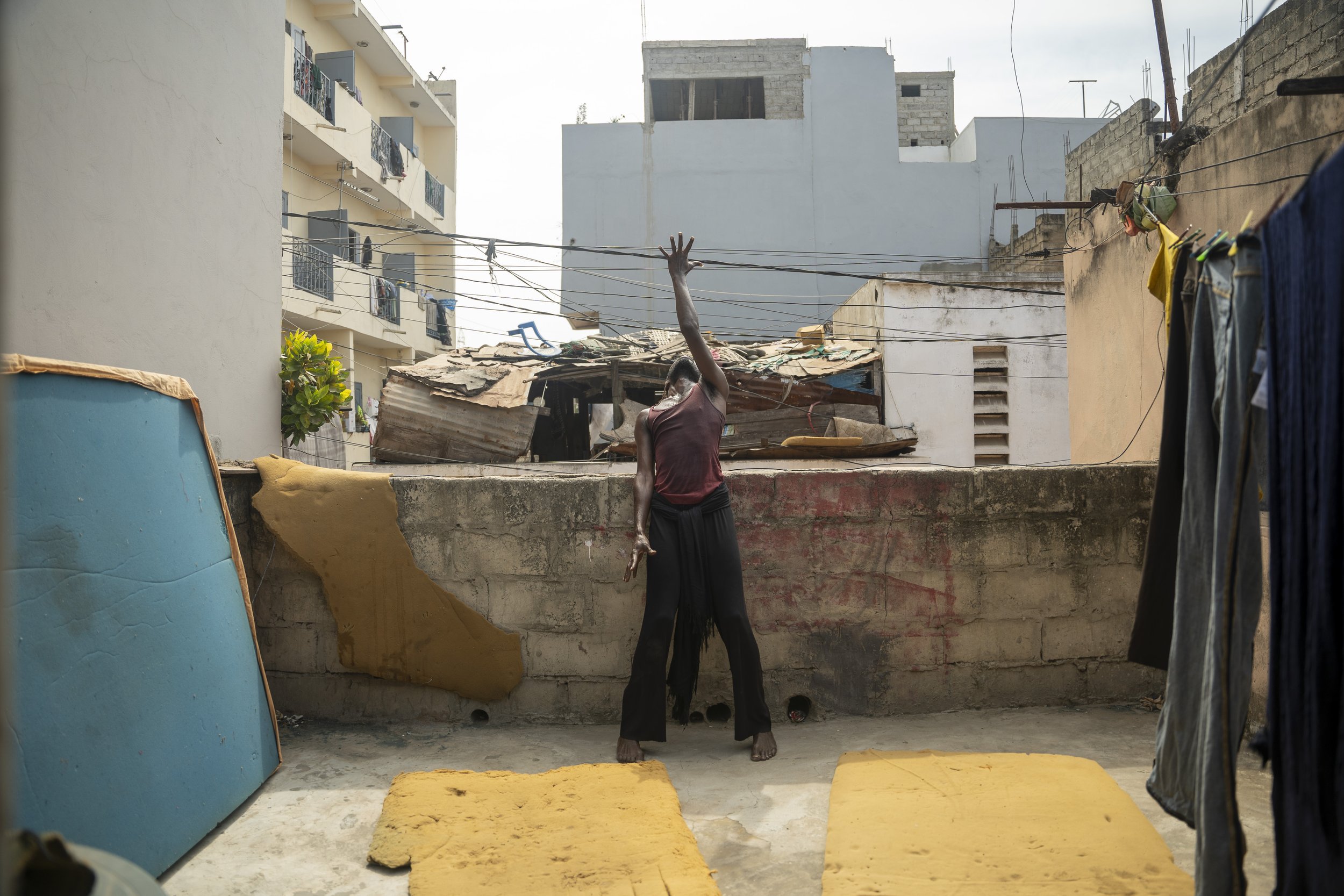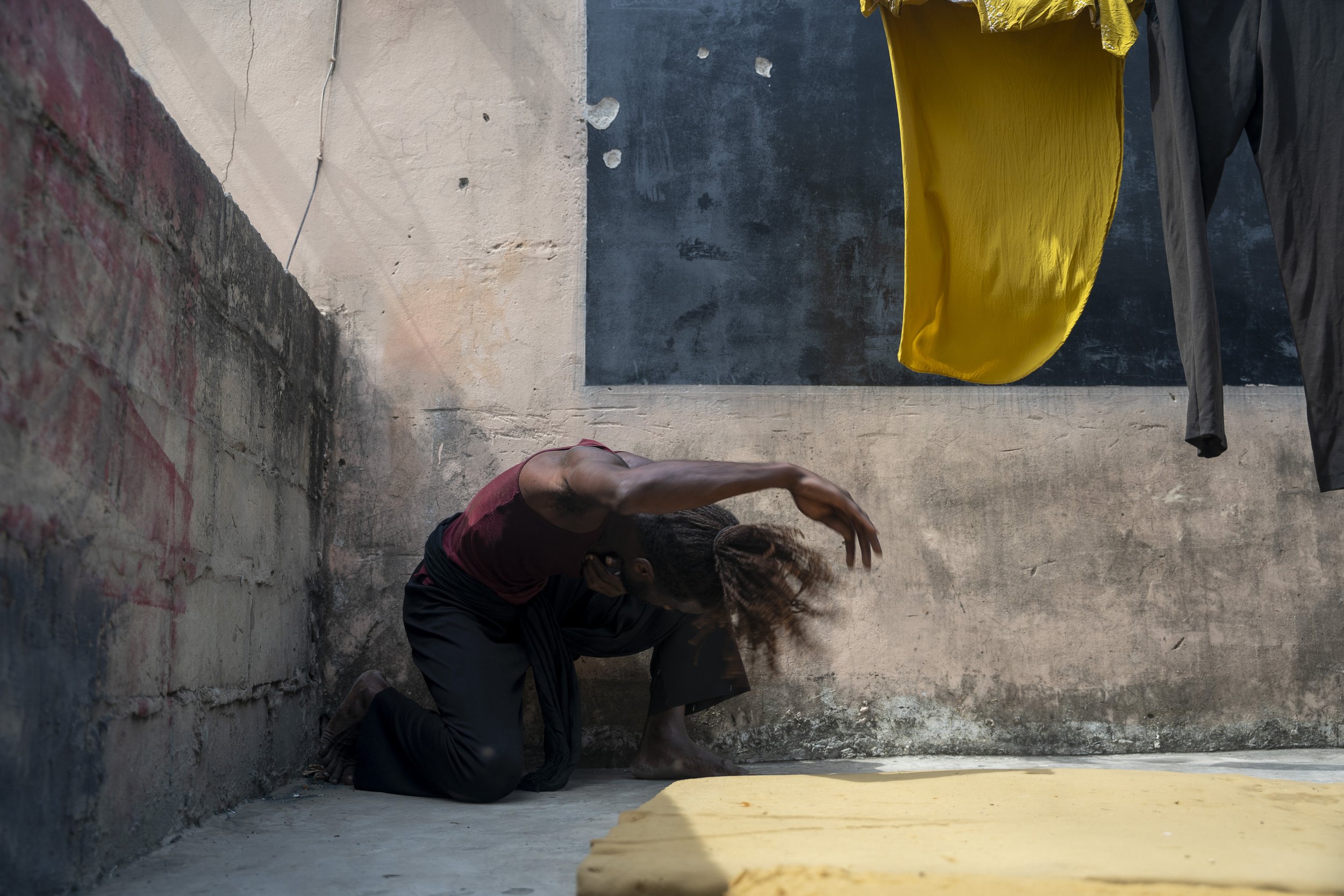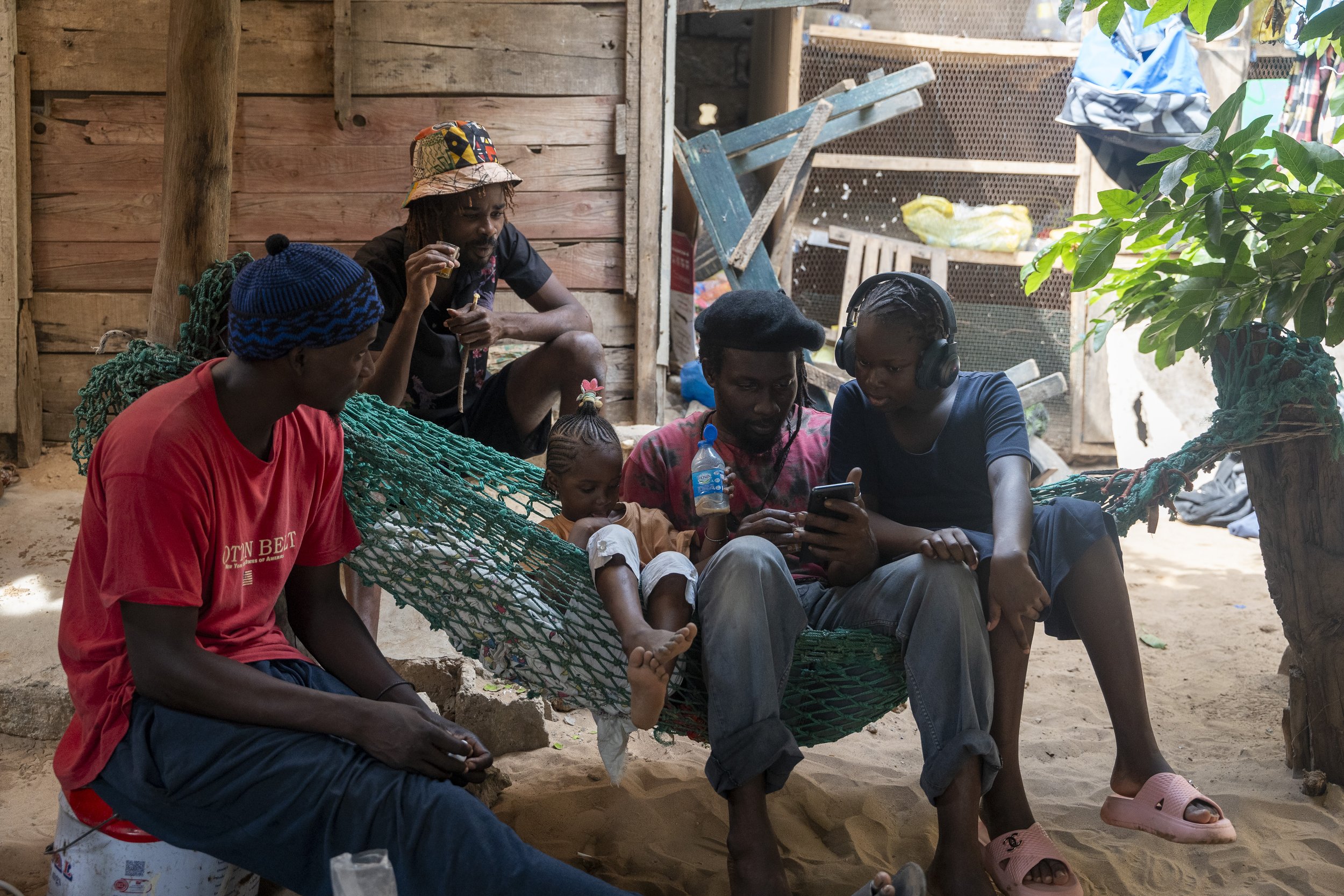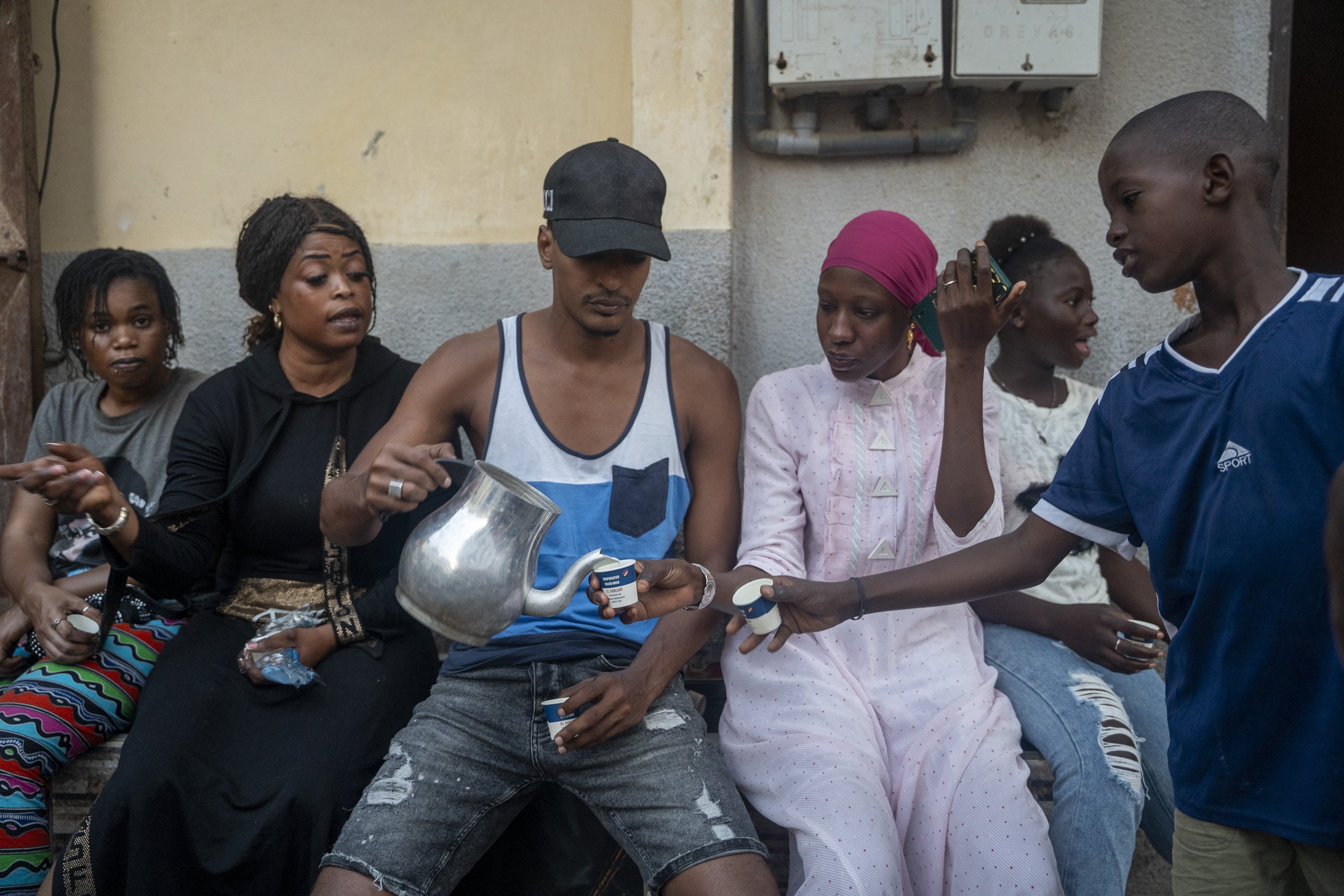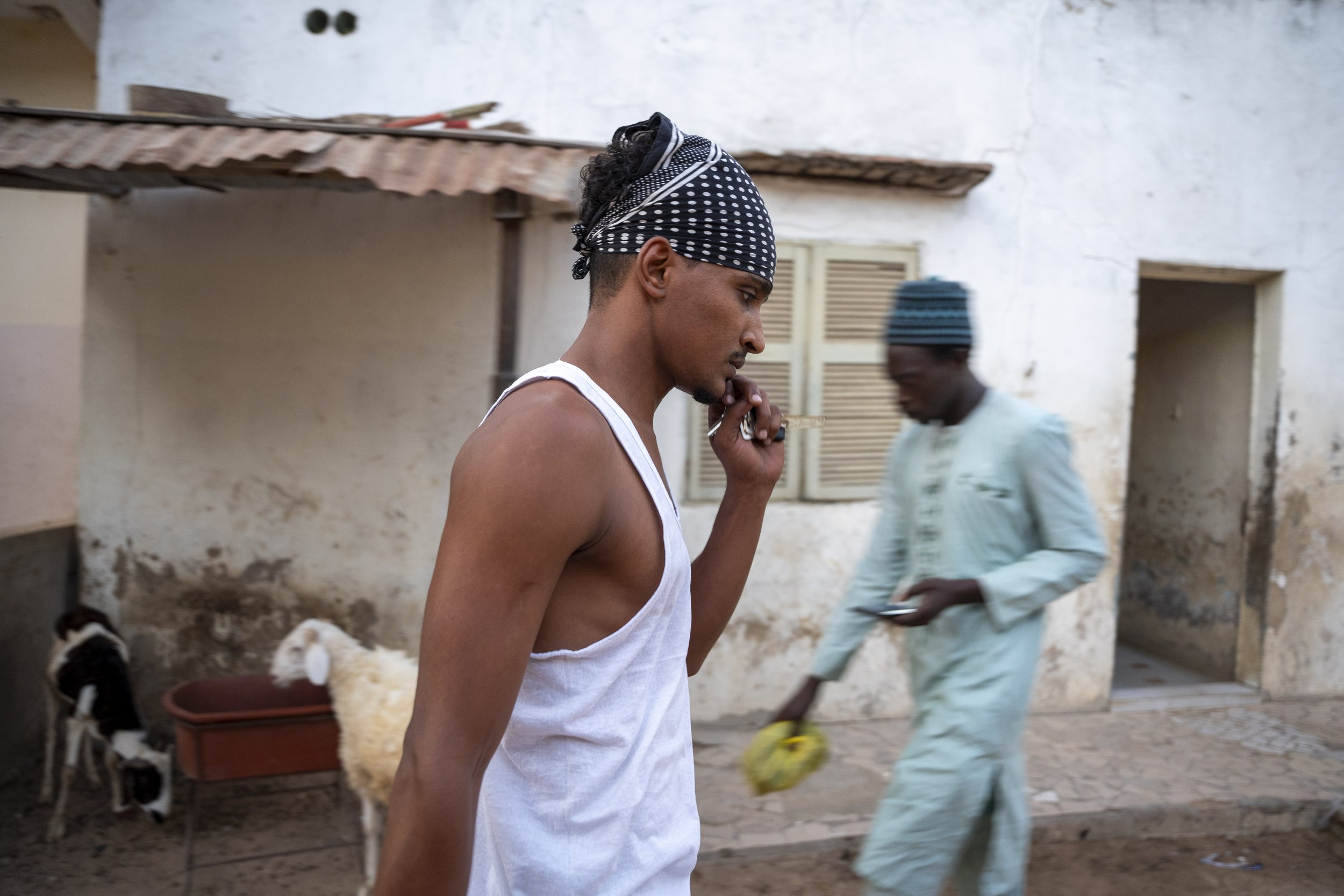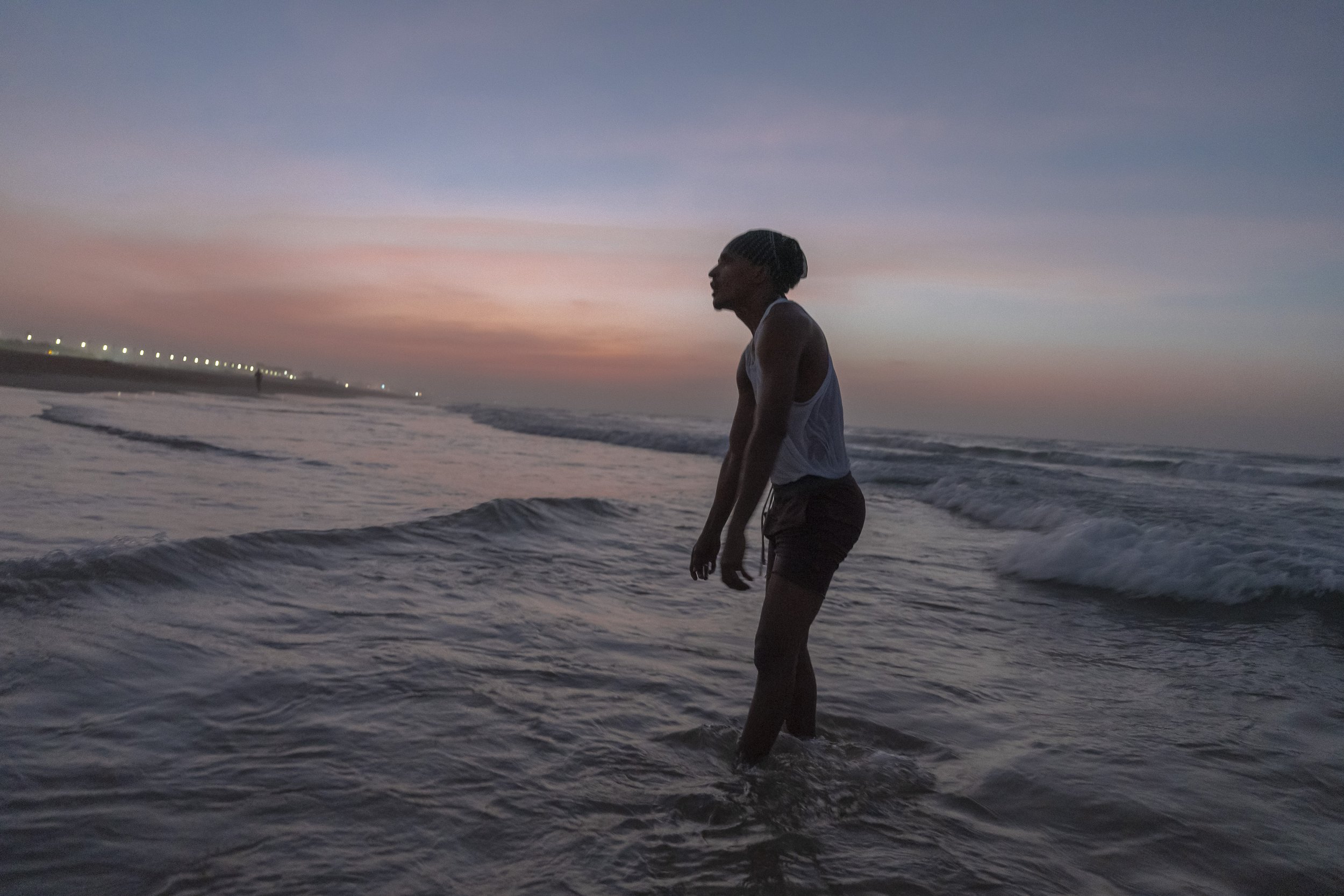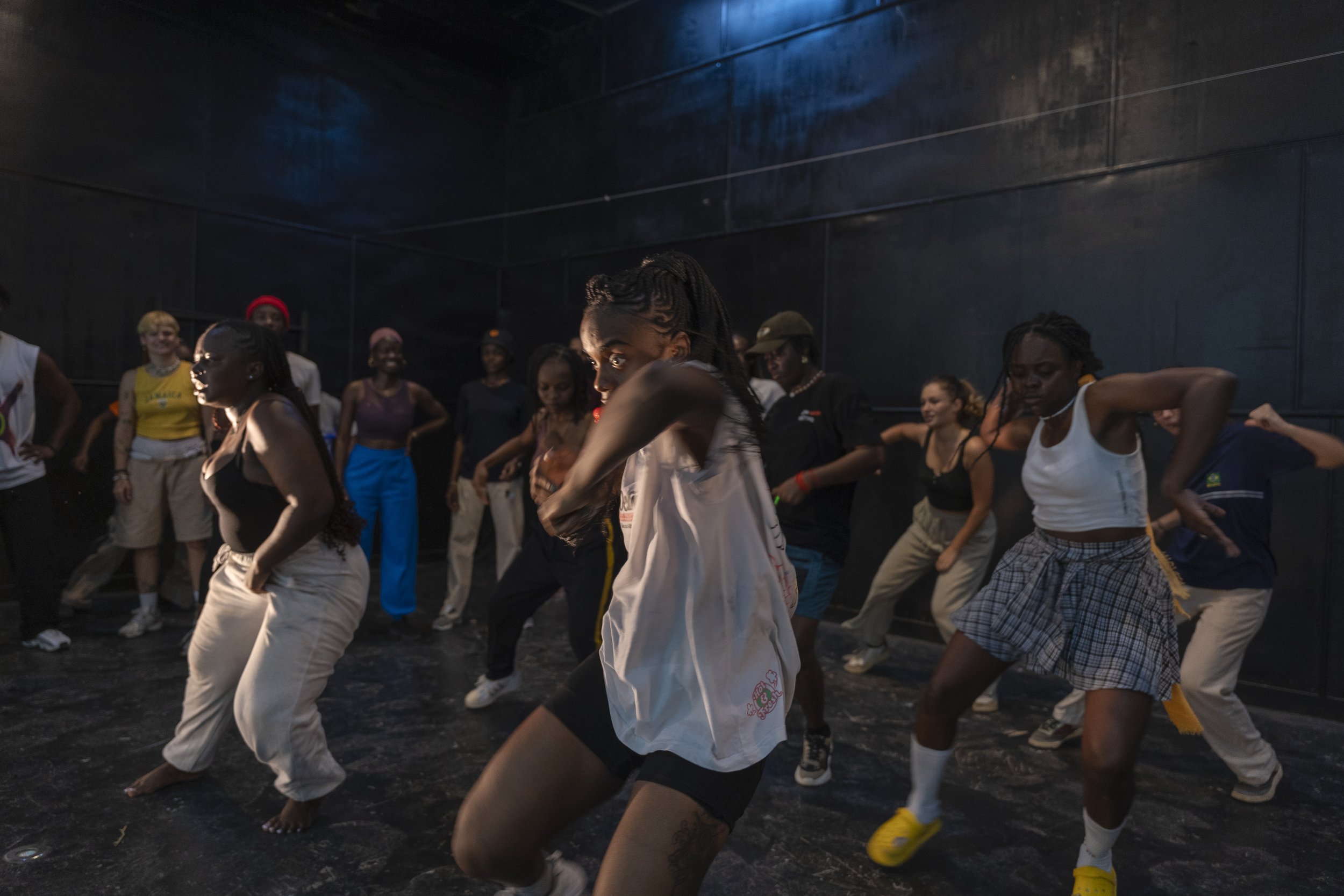Being a dancer in Dakar presents unique challenges: stereotypes persist, and dance is often linked to homosexuality, which remains highly stigmatized, complicating their profession.
Demba and Mini practice at a studio in HLM, a modest district of Dakar.Demba also trains at home, known as "the artists' house," where everyone—from those in the hammock to those preparing meals—is an artist.They share a creative community in Dalifort, a neighborhood on the outskirts of Dakar.Mini often trains at the beach near his home, especially in the evenings when the temperatures are cooler, and the light inspires his dance moves.He spends a lot of time with the youth and children in his neighborhood.Once a week, the community organizes a small fundraiser where everyone contributes a little money to do something meaningful.This week, for instance, they prepared hot milk to share together—a simple yet profound moment of connection.A dance battle is organized at the community center where the studio is located.Participants from all over Dakar, and even as far as France, come to compete in this niche, underground style of Dakar Afro dance.
Dancer’s lifes in HLM6, Dakar


